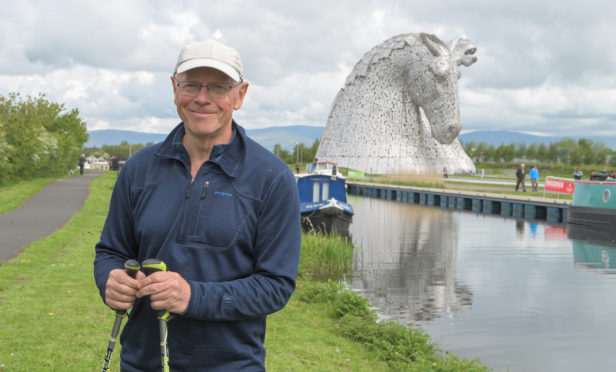A stroke patient who spent two months walking one of the toughest challenges in the UK has raised more than £3,700 for charity.
Against the odds, Douglas Sewell, 61 from Inverness, who suffered a serious stroke in 2010, has completed the Scottish National Trail, just two months after first setting off.
Mr Sewell referred to his 536 mile trek as a “bit of a walk”, but in reality he braved a very challenging yomp the length of Scotland, from the Scottish Borders right up to Cape Wrath.
The walk involves ascent of approximately 55,000 feet – nearly twice the height of Everest – as he climbed his way through Scotland’s toughest terrain.
Mr Sewell said he wanted to give something back to charity Chest Heart and Stroke Scotland, to help other stroke survivors get their lives back on track.
During his epic journey Mr Sewell encouraged other stroke survivors to walk alongside him and take that first step on their recovery journey.
In 2003 Douglas had a stroke in one of the most remote places in the world. It struck out of the blue when he was trekking in the Peruvian Andes at about 16,000 feet, two days journey from the nearest help.
Mr Sewell said: “After the stroke I felt that much of my life had disappeared because I felt I couldn’t do any of the activities I used to before. But walking helped me to improve gradually; it improved both my physical and mental health because I was very unhappy after my stroke that I couldn’t do these things anymore.
“When I had my stroke and for months afterwards if you’d suggested I could do this, well, I wouldn’t have imagined it possible. But now nine years after the stroke I am able to do that because I’ve persevered by exercising gradually, particularly by walking.”
Mr Sewell’s Just Giving page can be found at www.justgiving.com/fundraising/douglas-sewellchss
